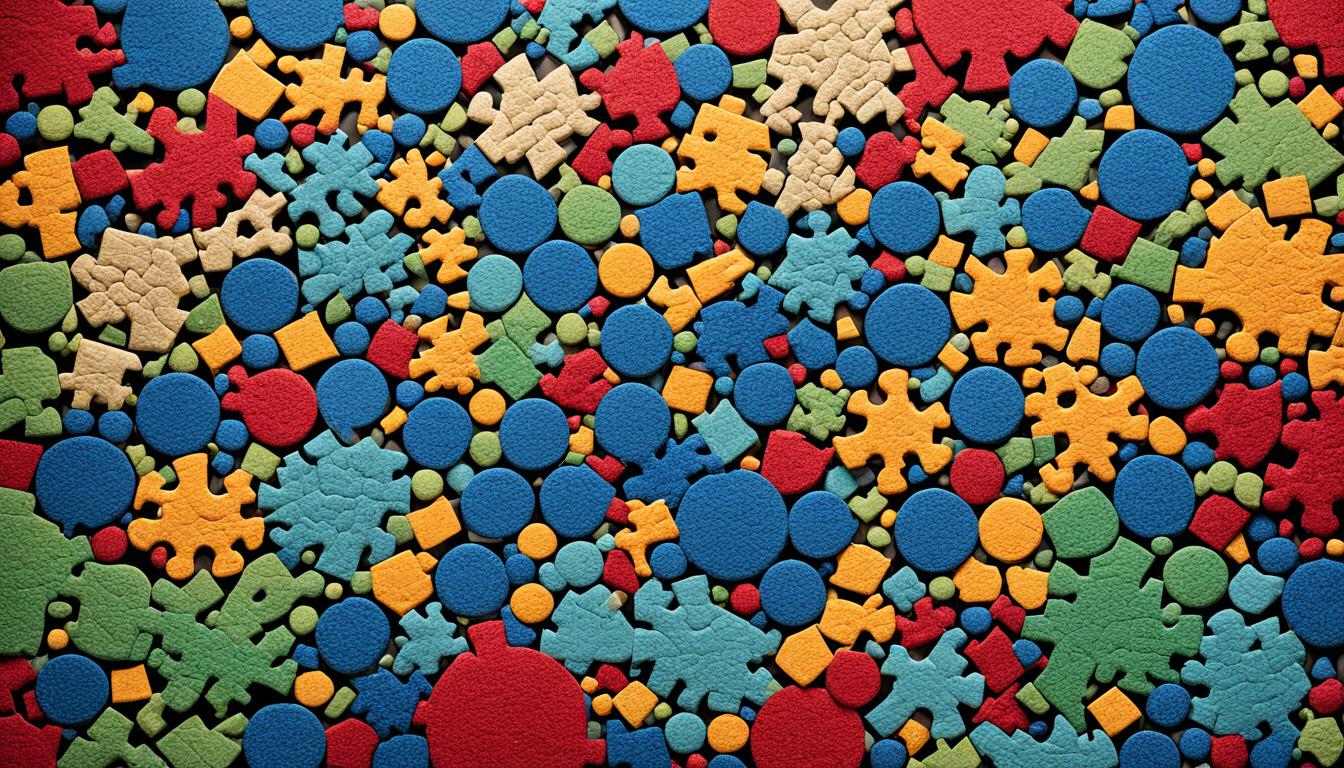Have you ever wondered what lies at the core of Buddhist teachings? What are the building blocks that shape our perception of the world and ourselves? The answer lies in the concept of the five aggregates. Understanding these aggregates unlocks a deeper understanding of ourselves and offers profound insights into the nature of existence.
Within Buddhism, the five aggregates, also known as the five skandhas or khandhas, are form, sensation, perception, mental formation, and consciousness. These aggregates, experienced by every individual, create a sense of self and shape our understanding of reality. But what if viewing these aggregates as an intrinsic part of ourselves is causing unnecessary suffering?
In this article, we will delve into the nature of the five aggregates and explore how understanding and working with them can lead to a healthier, more balanced life. We will also discuss the danger of identifying too strongly with the aggregates and the transformative power of meditation in cultivating non-attachment and mindfulness.
Are you ready to unlock the profound wisdom of the five aggregates and embark on a journey of self-discovery and inner peace? Let’s dive in!
Key Takeaways:
- The five aggregates are form, sensation, perception, mental formation, and consciousness.
- Viewing the aggregates as an intrinsic part of ourselves can lead to suffering.
- Meditation is a powerful practice for cultivating non-attachment and understanding the aggregates.
- The five aggregates offer insights into the impermanent and empty nature of existence.
- By cultivating mindfulness and non-attachment, we can lead healthier, more balanced lives.
The Five Aggregates in Buddhism
In Buddhism, the five aggregates, also known as the five skandhas or khandhas, are fundamental aspects of sentient existence. These aggregates serve as the building blocks through which we experience and navigate the world. By understanding the five aggregates, we can deepen our insight into the nature of reality and gain greater clarity about ourselves and our place in the universe.
1. Form (Rupa)
The first aggregate is form, or rupa. It refers to the physical matter that we perceive through our senses. Everything that has a material presence, including our bodies and the objects around us, falls under the category of form.
2. Sensation (Vedana)
The second aggregate is sensation, or vedana. It encompasses the physical and sensory experiences we encounter when we come into contact with the world. It includes the sensations of pleasure, pain, and neutrality that arise in response to various stimuli.
3. Perception (Samjna)
The third aggregate is perception, or samjna. It relates to the labeling and categorization of our sensory experiences. Perception helps us recognize and make sense of the world by giving meaning to the sensory information we receive.
4. Mental Formations (Samskara)
The fourth aggregate is mental formations, or samskara. It encompasses our mental processes, biases, predispositions, attitudes, interests, and actions. Mental formations shape our thoughts, emotions, and behaviors, and they contribute to the development of our identities.
5. Consciousness (Vijnana)
The fifth aggregate is consciousness, or vijnana. It represents our awareness of the physical and mental processes that occur within us and around us. Consciousness allows us to perceive and understand the world, and it plays a vital role in our overall experience of reality.
Understanding these five aggregates helps us recognize that our sense of self is not fixed or inherent. Instead, it arises from the interplay and dynamic nature of these aggregates. By cultivating mindfulness and non-attachment, we can gain insight into the impermanent and empty nature of the aggregates, ultimately freeing ourselves from suffering and achieving liberation.

| Aggregate | Description |
|---|---|
| Form (Rupa) | Physical matter that can be perceived with the senses |
| Sensation (Vedana) | The physical sensory experience of an object |
| Perception (Samjna) | The labeling of sensory experience |
| Mental Formations (Samskara) | Biases, prejudices, interests, attitudes, and actions |
| Consciousness (Vijnana) | Awareness of physical and mental processes |
The Danger of Identifying with the Aggregates
One of the core teachings of Buddhism is that life is suffering. The Buddha taught that by embracing emptiness or non-attachment, we can alleviate suffering. When we view the five aggregates as intrinsic parts of ourselves, we create a sense of individual identity and attachment. This attachment to the aggregates can lead to suffering when we judge experiences, thoughts, or emotions as negative or unpleasant. By practicing non-attachment and mindfulness, we can view the aggregates without coloring them with our perception and save ourselves from pain and heartache.
When we identify with the aggregates, we create a false sense of self. We believe that the body, sensations, perceptions, mental formations, and consciousness define who we are. However, the Buddha taught that these aggregates are impermanent and empty of inherent existence. They are constantly changing and dependent on various causes and conditions. By attaching ourselves to these ever-changing aggregates, we set ourselves up for disappointment and suffering.
Non-attachment allows us to let go of our identification with the aggregates. It means recognizing that the aggregates are not who we truly are. They are temporary phenomena that arise and cease, just like everything else in the universe. When we stop identifying with the aggregates, we can experience a sense of freedom and peace. We no longer define ourselves based on our physical bodies or mental experiences. Instead, we become aware of the underlying emptiness and interdependence of all things.
Mindfulness is a powerful tool for cultivating non-attachment. By practicing mindfulness, we can observe the arising and passing away of the aggregates without getting caught up in them. We develop an awareness that goes beyond the surface level of our experiences. Instead of reacting habitually to our thoughts, sensations, and emotions, we can respond with wisdom and compassion. Mindfulness helps us break free from the cycle of suffering by allowing us to see the transient nature of the aggregates and the emptiness at their core.
By letting go of our attachment to the aggregates and cultivating non-attachment and mindfulness, we open ourselves to a deeper understanding of reality. We recognize that the aggregates are not who we truly are, and we can release ourselves from the suffering that arises from clinging to them. Embracing emptiness and non-attachment allows us to live with greater freedom, joy, and compassion. It is a transformative practice that leads to true liberation and inner peace.

Meditation and the Five Aggregates
Meditation is a powerful practice that can deepen your understanding of the five aggregates and help you cultivate non-attachment and mindfulness. By engaging in regular meditation, you can separate yourself from the aggregates and observe them with clarity.
During meditation, you can sit quietly and bring your attention to your breath or a specific focal point. As your mind begins to settle, you can observe the arising and passing of thoughts, sensations, and emotions without judgment. This process allows you to break the power that these aggregates have over you.
Through sustained meditation practice, you develop a deeper awareness of the impermanent and empty nature of the aggregates. You come to realize that they are not fixed or inherent aspects of your identity, but rather temporary and conditioned phenomena.
As you continue to meditate, you cultivate non-attachment by letting go of any clinging or identification with the aggregates. This non-attachment allows you to experience these aggregates with a greater sense of freedom and liberation.
Additionally, mindfulness plays a crucial role in meditation and understanding the five aggregates. By being fully present and aware in each moment, you can observe the arising and passing of the aggregates with clarity and acceptance.
Mindfulness helps you develop a non-judgmental and compassionate attitude towards the aggregates, allowing you to let go of any negative or unwholesome patterns that may arise.
Through the combined practice of meditation, non-attachment, and mindfulness, you can gain a deeper insight into the true nature of the five aggregates. This understanding can lead to a greater sense of inner peace and well-being.

| Benefits of Meditation for Understanding the Five Aggregates |
|---|
| 1. Cultivates non-attachment |
| 2. Enhances mindfulness |
| 3. Develops insight into impermanence |
| 4. Promotes freedom from identification |
| 5. Fosters inner peace and well-being |
Conclusion
Understanding the five aggregates is crucial for deepening your self-awareness and finding inner peace. In Buddhist teachings, the five aggregates serve as the foundation for comprehending the nature of existence and overcoming suffering. By recognizing that the aggregates are impermanent and empty by nature, you can break free from attachment and alleviate the pain caused by clinging.
Meditation plays a vital role in cultivating non-attachment and mindfulness. Through regular practice, you can develop a harmonious relationship with the aggregates. By observing your thoughts, sensations, and emotions without judgment, you gain clarity and insight into their transient nature. This process allows you to let go and find profound inner peace.
Buddhism offers profound teachings that can guide you in navigating modern challenges and establishing harmony within yourself and society. Embracing the wisdom of the five aggregates can unlock a deeper understanding of your true nature and lead you on a transformative path. By integrating these teachings into your life, you can cultivate self-awareness, embrace the impermanence of existence, and live a more balanced and harmonious life.
FAQ
What are the five aggregates in Buddhism?
The five aggregates, also known as the five skandhas or khandhas, are form, sensation, perception, mental formation, and consciousness.
How do the five aggregates create a sense of self?
Each person experiences the world through the five aggregates, which can create a sense of individual identity and attachment.
Why can viewing the aggregates as intrinsic parts of ourselves cause suffering?
When we attach ourselves to the aggregates, we can judge experiences, thoughts, or emotions as negative or unpleasant, leading to suffering.
How can meditation help with understanding the five aggregates?
Through meditation, we can cultivate non-attachment and mindfulness, allowing us to observe the aggregates without judgment and break their power over us.
What benefits can understanding the five aggregates bring?
Understanding the impermanent and empty nature of the aggregates can help us break free from attachment, alleviate suffering, and find inner peace.

